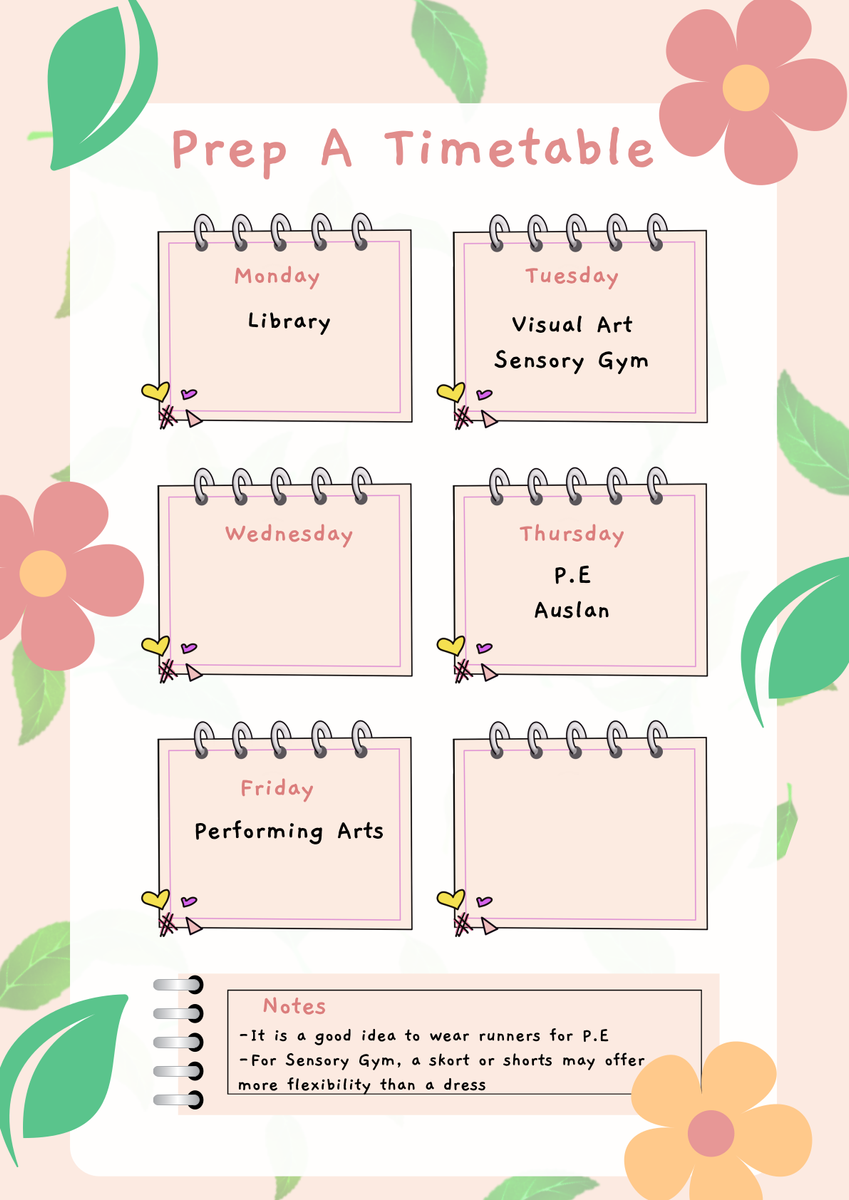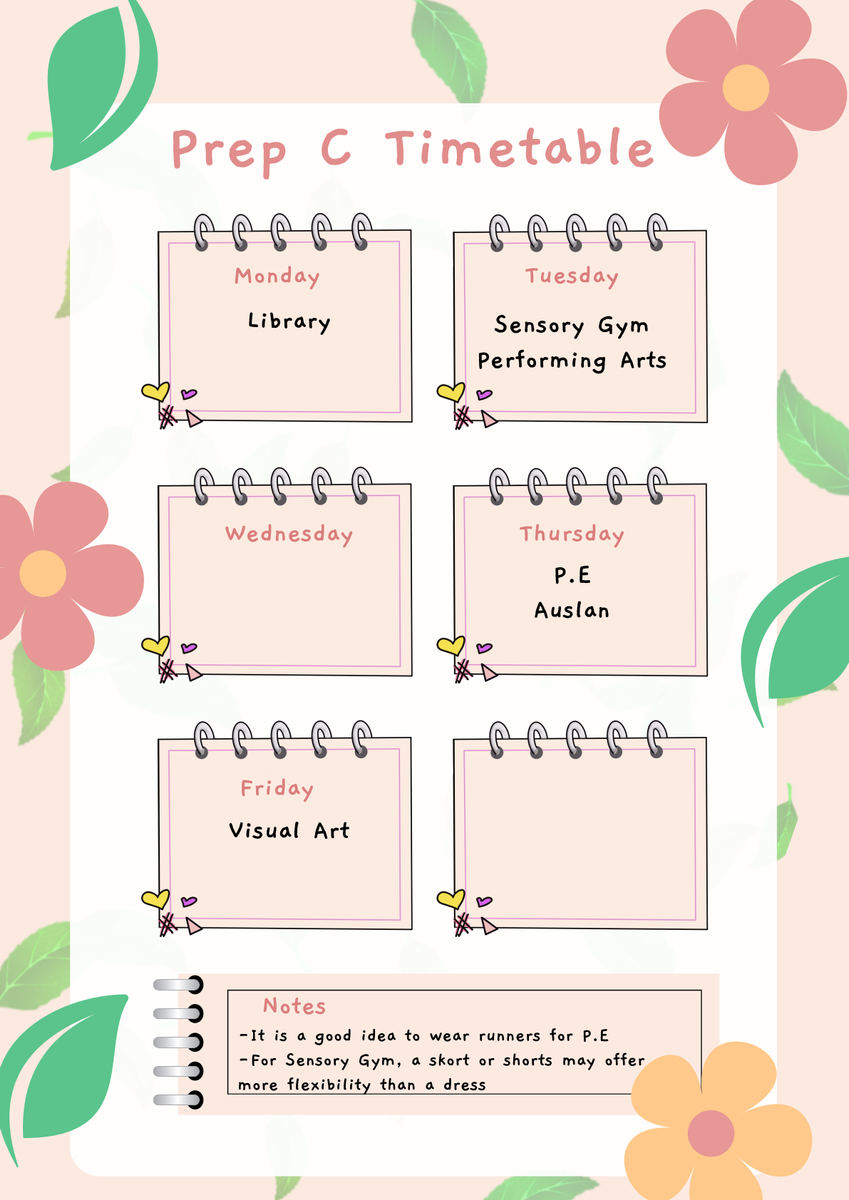Prep Wonga Weekly
Week 8, Term 1

Prep Wonga Weekly
Week 8, Term 1
INFORMATION
🗓️ Upcoming Dates:
Tuesday 25th March: Colour Run
Thursday 27th March: School Photos
Friday 4th April: Last day of Term 1 - 2.30pm dismissal
📚 Book Pocket Update & Reminders
Your child should have brought their book pocket home last week. Hopefully, you’ve had a chance to read some of the decodable pyramids and the UFLI passage that were sent home.
Book pocket reminders and tips:
-Please encourage your child to bring their book pocket to school daily. We will add two decodable passages each week. (Note: books will start being sent home in Term 2.)
-Re-reading these passages at home is highly beneficial.
-Fluency Matters: Fluency is key to becoming a strong reader and develops with repetition and practice. Fluent reading should be smooth and sound natural. Once your child has decoded (sounded out) the words, encourage them to re-read the passage with fluency.
-Reading Logs: Checked every Friday—please remember to record the name of the pyramid or passage your child has read.
A note on decoding:
Blending three sounds to read words is a new skill for most Prep students. It takes time and practice! If your child finds the passages tricky, try focusing on individual words - decoding them down together (e.g., C-A-T… cat) - to build their confidence.
🎨 Specialist timetable






CURRICULUM
📚 Phonemic awareness: reading and phonics
We are learning about the letters N, including the sound it makes (the 'phoneme'), how to write it using correct formation (the 'grapheme') and the cued articulation. Students will also read and write CVC words with the medial* vowels, A and I (*middle).
Students will review the Heart Words - 'the', 'and', 'I', 'a', and learn the word 'is'
What can you do at home?
-Read bedtime stories to your child
-Review the sound/letter names and cued articulation for letters taught so far - short A, M, S, T, P, F and short I
-Assist your child to read the decodable passages in their book pocket
📝 Literature: reading responses and writing
The mentor texts for this lesson are We Are All Equal by Paul Crumble and Queen Celine by Matt Shanks. These carefully selected books align with our CBL Guiding Questions while also complementing Harmony Week’s themes of equality and diversity.
Students will revisit key story elements including character, setting, and plot structure—examining the beginning, middle and end of a story. They will also make meaningful text-to-self connections and deepen their understanding of character by exploring how actions influence others.
We now know two vowels—A and I—allowing us to form more CVC (consonant-vowel-consonant) words. Using these words, we will begin constructing simple sentences.
Students will also practice handwriting with a focus on the letter N, while reviewing the formation of previously learned letters.
Additionally, we will incorporate activities to further develop fine motor skills essential for writing.
What can you do at home?
-Play with things that develop fine motor skills like lego, playdough, drawing and building blocks
-Help your child develop their pencil grip
-Write the letters A, M, S, T , P, F and I using taught lower case formations. Use these letters to write some words, using A and I as the middle vowels!
🔢 Maths
Students will explore teen numbers by naming, representing and ordering them using hands-on materials such as ten frames, counters and visual representations. They will also practice writing teen numbers, ensuring that the 1, representing 10, comes first (e.g., fifteen is written as 15, not 51). Through activities with bundling sticks, students will develop their understanding of why teen numbers follow this structure.
What can you do at home?
-Count collections using up to 20, using 1-1 counting (ie. one touch, one number)
-Write numbers using taught formations - extend number writing to teen numbers! Remember - the 1 comes first to represent '10'
-Emphasise the importance of saying 'teen' at the end of numbers - eg. sixteen, not sixty. (sometimes Prep students do this!)
🌏 CBL - Connections
This week, we are exploring some of our Guiding Questions through our Mentor Text discussions and tasks (see above in literature).
We are also developing our understanding of Connections through our Wellbeing programs of Friendology and Respectful Relationships - see below!
💛 Wellbeing & School Wide Positive Behaviour (SWPBS)
In Friendology, students are completing Session 5 called Friend-O-Meter. This session helps students identify the difference between healthy and unhealthy friendships and the impact that body language has on our friendships.
Our SWPBS focus continues to be the expectation of 'Be Kind'. We will continue to include others by asking if they would like to join in games. Building on this, we are also looking at the expectation of 'Be Safe', especially when students are outside playing with their friends. We will talk about safe spaces to play and safe choices of games to play.
To complement Harmony Week, we will explore how families differ within the context of Respectful Relationships. Students will describe the various ways families can be different and reflect on how family members can support one another.